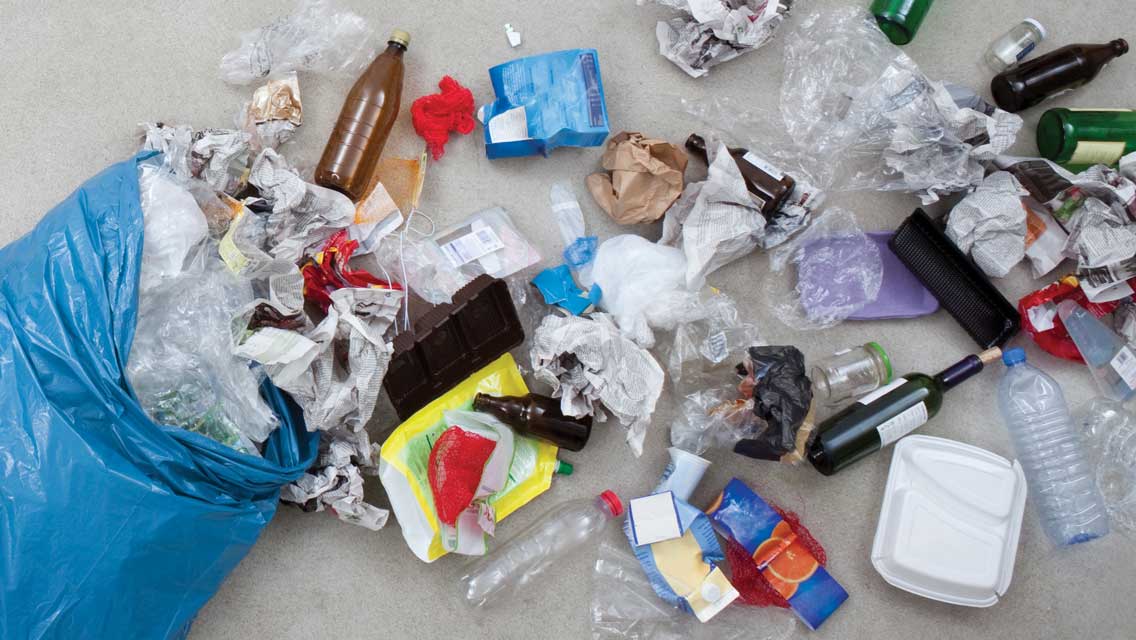Litter looks awful on the side of a highway, but it affects a lot more than the aesthetics of a space. Viral images of dead albatrosses starved from ingesting plastic instead of food and a black skimmer mistakenly feeding a cigarette butt to its chick elucidate the global pollution crisis.
Humans discard some 60 million plastic water bottles every day and toss 4.5 trillion cigarette butts every year. With an estimated 8 million metric tons of plastic littering oceans annually, birds and other marine life have ample opportunity to gulp down the debris.
But it’s not just marine life that’s affected by the dreck. A groundbreaking 2018 study also found microplastics in the guts of humans.
In addition to creating a fire hazard, cigarettes may leach more than 4,000 toxins into soil and waterways, threatening the health of organisms — including humans — that come in contact with them.
Aluminum cans and broken glass littered on beaches and playgrounds result in cuts for humans, while animals that get tangled in fishing line and plastic six-pack rings suffer injuries or death.
The Surprising Impact of Discarded Gum
Cleaning up the mess takes considerable resources. The United States alone spends more than $11.5 billion annually on litter abatement.
Across the Atlantic, when London officials sent crews to steam-clean the streets free of gum before the 2012 Olympics, the process cost as much as $3 per wad.
Litter’s presence also lowers property values — by around 7 percent; buyers indicate they’re less likely to buy homes in a littered neighborhood.
Stray gum is ubiquitous in the United Kingdom; some 92 percent of its stone pavers have some of it. Many British municipalities have called upon manufacturers to contribute to the estimated £60 million annual cost of its removal.
In Singapore, the gluey residue was gumming up streets, keyholes, and rail lines so much that former prime minister Lee Kuan Yew banned the import, sale, and manufacture of the substance. Today, littering of any kind carries a fine. Sometimes, judges even order litterbugs to participate in street-cleanup efforts.
Litter has financial impacts beyond personal fines:
- Tourism declines in areas where stray garbage becomes an eyesore.
- Accidents occur when motorists swerve to avoid litter on roadways, resulting in increased insurance rates.
- Litter’s presence also lowers property values — by around 7 percent; buyers indicate they’re less likely to buy homes in a littered neighborhood.
How Litter Decreases Property Value
Litter damages our quality of life, too. Tidy streets and neighborhoods signal that residents care about where they live and work, and people reportedly feel safer living in litter-free areas.
Heavily littered neighborhoods tend to experience more vandalism and other crimes. Dutch researchers found that 25 percent of passersby stole an envelope with a five-euro note protruding from a mailbox if there was litter on the ground nearby. Only 13 percent of study subjects took the money in areas free of litter.
Dutch researchers found that 25 percent of passersby stole an envelope with a five-euro note protruding from a mailbox if there was litter on the ground nearby
Litter can weigh heavily on our psyches, as well. A Portland State University study of participants in a supportive-housing program identified litter as an obstacle to residents’ recovery.
Just looking at photographs of littered beaches caused participants in one British study to exhibit signs of stress, further indicating that a little litter can be a heavy burden.
Cleaning Up Litter
Litter is a big problem, but cleaning it up doesn’t have to be — and it doesn’t require a ton of time:
- Have five minutes? Clean up the litter in your yard, making sure to check around shrubs and trees.
- Have 15 minutes? Clean up the litter on your block.
- Have 30 minutes? Take a bag with you when you go for a walk and pick up any human-generated debris.
- Have an afternoon? Organize your neighbors and clean up a local litter hotspot, such as a park, beach, or vacant lot.
Consider these tips for stashing stray trash:
- Get your company, church group, or book club involved by adopting a highway, greenway, or local park.
- Choose reusable water bottles, coffee mugs, and cloth napkins so you don’t generate waste in the first place. (Find ways to live with less plastic at “18 Ways to Live With Less Plastic”.)
- Practice leave-no-trace etiquette when you’re hiking, whether on a trail or in the city. Learn how at “The 7 Principles of Leave No Trace”.
- Advocate for laws against the production of single-use packaging. Supply-side changes can be effective. Finland’s “refillable bottle” law, for example, resulted in Finns returning nearly 100 percent of refillable glass bottles for reuse. Currently only 10 states have similar laws, so enacting more of them may help prevent waste from being created in the first place, which is the easiest way to control it.
Time Lines for 12 Commonly Consumed Items to Break Down
Everything takes time to decompose. Here’s the time frame for some commonly consumed items.*
- Sheet of paper towel: 2 to 4 weeks
- Apple core: 1 to 2 months
- Banana Peel: 2 years
- Cigarette butt: at least ten years
- Steel can: 50 years
- Small potato-chip bag: 75 to 80 years
- Plastic straw: Up to 200 years
- Aluminum can: 200 to 500 years
- Plastic bottle: 450 years
- Disposable diaper: 550 years
- Monofilament fishing line: 600 years
- Chewing gum: 100s of years
*Over time, nonorganic items break down into smaller fragments, and those pieces remain in the environment. Further, the length of time it takes for something to decompose depends on weather, size of the object, how the item was disposed of, and other factors.




This Post Has 0 Comments